As the site is updated, each listing includes the shipping cost. Some listings which I have not updated still give you calculated shipping costs based on weight and size of package. (In the sections I have updated) If you select several different listings, we will consolidate your order and charge you the actual cost of the entire package. The shipping over charge will be refunded to you, when your order is shipped.
TRITON SHELLS OF THE CARIBBEAN AND PACIFIC, ALL HIGH QUALITY WITH POPULAR SIZES AND PRICES
Triton shells have thick and often highly decorated shells. Most are found in tropical waters. The Trumpet Triton of the Pacific is one of the more coveted species. Their range is from the Indian Ocean across Indonesia to the northern coast of Australia to the shores of New Zealand. Some have been found in southern Japanese waters.
The Triton in general has a pointed spire. A spire is the coiled part of the gastropod; which usually extends to a point. As mentioned Tritons are gastropods (single shelled mollusk). A mollusk is the soft bodied animal living inside the Triton shell. They usually generate a calcius shell. In this case a single shell (gastropod).
Tritons are members of the snail family. Scientific name: Cymatiidae. In their case sea snails. They are carnivorous (meat eaters) dining on other mollusks and sea urchins.
Native islanders used the Trumpet Triton shell as a musical instrument. That's how they became known as Trumpet Tritons. To make a Trumpet the natives cut part of the spire off.
Our Pacific Tritons were caught off the Indonesian coast. Where as the Caribbean Tritons were caught near and around the Caribbean Sea.
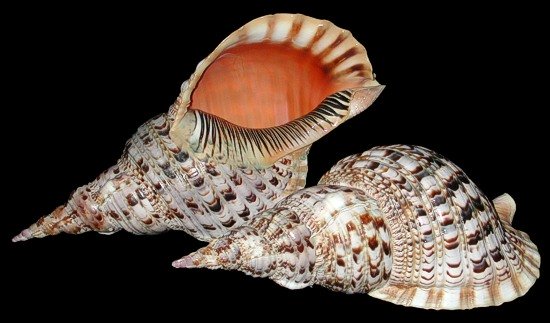
PACIFIC TRITON
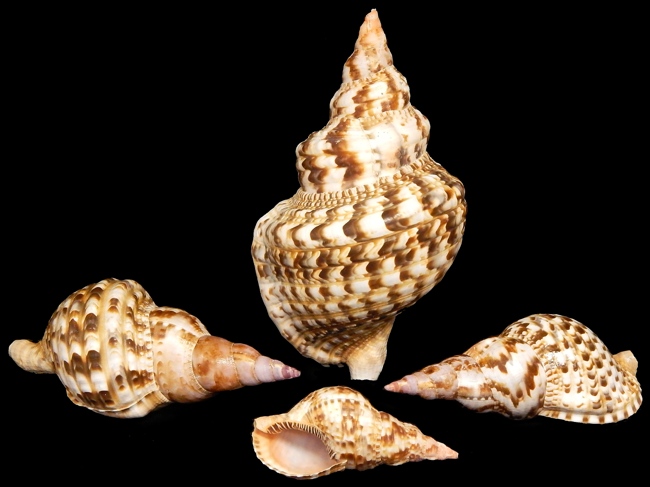
CARIBBEAN TRITON
The Caribbean Triton or "Charonia variegata" ranges from the waters off North Carolina south to the coast of Brazil. Shell tips are often blunted
BB2-3
A Caribbean Triton Shell measuring 7 to 8 inches......$27.49
BB3-3
One Caribbean Triton shell 9 to 10 inches......OUT OF STOCK
BB4-3
A Caribbean Triton shell measuring 10 to 11 inches...$39.25
BB5-5
A Caribbean Triton shell measuring 11 to 12 inches.....$47.95
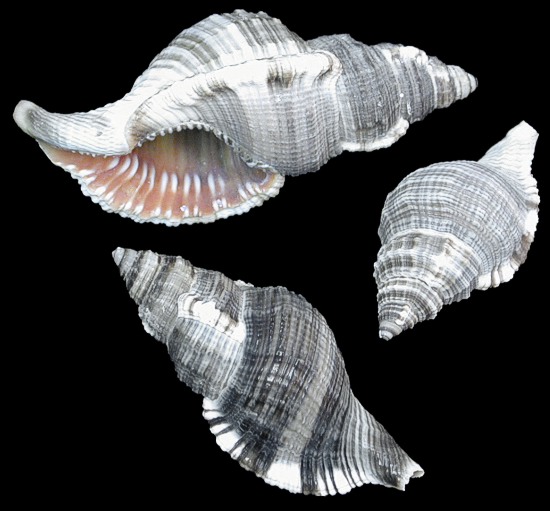
HAIRY TRITONS
Monoplex pilearis, commonly known as the hairy triton, is a medium-sized predatory sea snail. It is a marine gastropod mollusk belonging to the family Cymatiidae.
The Monoplex martinianus species has a broad distribution, inhabiting the Atlantic, the Red Sea, and the Indo-Western Pacific regions, ranging from East and South Africa to Eastern Polynesia, extending northward to Southern Japan and Hawaii, and southward to Southern Queensland. This marine species is also found from Florida in the United States to Brazil, including the Bermudas, Canary Islands, Liberia, Gabon, and Ascension Island.
Tropical benthic sea snails are typically found at depths ranging from 0 to 164 feet. They predominantly inhabit hard and coarse detrital bottoms within coral reef ecosystems.
The shells of Monoplex pilearis can grow to a size of 1.5–5.5 inches. These sizable shells are elongated, featuring a high spire and a prominently inflated body whorl. Their surface is yellowish-brown with chestnut-brown spiral bands. The columella and aperture display a dark brown hue, contrasted by white teeth. The shell's exterior is finely sculpted, with extended inner ridges on the outer lip that reach far into the aperture.
These sea snails are known to be active predators, primarily feeding on bivalves. They lay their eggs on the substrate in large capsules, which are clustered together in masses.
The Hairy Triton features a white shell with broad dark brown bands, and its aperture—the shell's opening—is reddish. When initially captured, Hairy Tritons may exhibit some hair growth, which typically vanishes after a brief period.
Scientific classification
[Domain: Eukaryota
Kingdom: Animalia
Phylum: Mollusca
Class: Gastropoda
Subclass: Caenogastropoda
Order: Littorinimorpha
Family: Cymatiidae
Genus: Monoplex
Species: Monoplex pilearis
Binomial name: Monoplex pilearis
(Linnaeus, 1758)
(REF: Monoplex pilearis (Linnaeus, 1758). Retrieved through: World Register of Marine Species)(REF: Galli C.: WMSDB - Worldwide Mollusc Species Data Base)(REF: Gofas, S.; Le Renard, J.; Bouchet, P. (2001). Mollusca. in: Costello, M.J. et al. (eds), European Register of Marine Species: a check-list of the marine species in Europe and a bibliography of guides to their identification. Patrimoines Naturels. 50)
UUO-1-9
A Hairy Triton shell measuring 2 to 3.5 inches...... .59
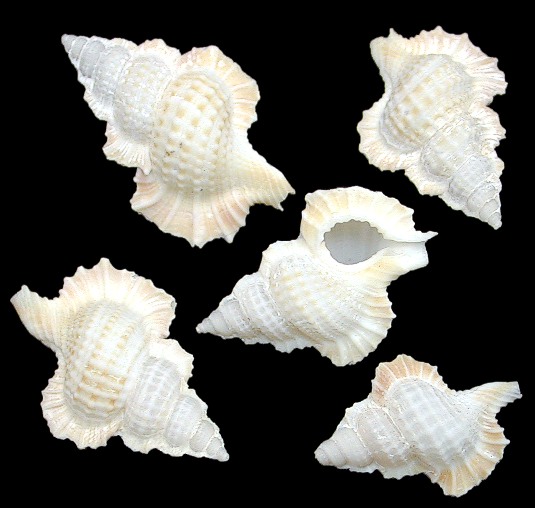
MAPLE LEAF SHELLS
Gyrineum perca, a predatory marine gastropod mollusk, belongs to the Cymatiidae family. It is often referred to as the winged triton or the maple leaf triton.
The shells of Gyrineum perca can vary in size, ranging from 1.2 to 3.9 inches in length. These distinctive shells are notably flattened, an adaptation for resting on soft substrates, and feature prominent flanges near the outer lips. Additionally, they have a blade-like extension of the outer shell layer that creates two longitudinal folds, which is reflected in the genus name. The color of the shell surface can be whitish, yellowish, or pale brown.
This species has a wide distribution, ranging from Eastern Africa to Japan.
Scientific classification
Domain: Eukaryota
Kingdom: Animalia
Phylum: Mollusca
Class: Gastropoda
Subclass: Caenogastropoda
Order: Littorinimorpha
Family: Cymatiidae
Genus: Gyrineum
Species: Gyrineum perca
Binomial name: Gyrineum perca
(Perry, 1811)
(REF: Gyrineum perca (Perry, 1811). Retrieved through: World Register of Marine Species)(REF: Linsley and Javidpour Gastropod episodic growth Biodiversity Library)(REF: Galli C.: WMSDB - Worldwide Mollusc Species Data Base)
M2-8
A Maple Leaf Triton shell measuring up to 1 1/4 inches ...... .07
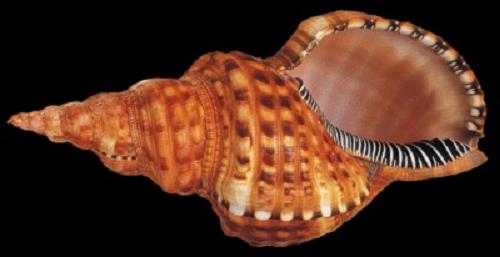
Gold Triton Shell